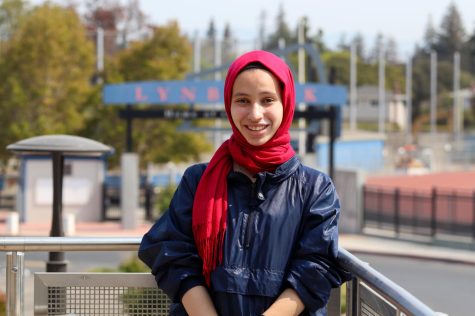Everything you’re too tired to ask about napping
Graphic illustration by Myles Kim; photo by Anwen Huang
Napping is a prevalent activity that many students engage in.
March 8, 2022
Naps get a bad rap. But for many students not sleeping well enough, napping has become an integral part of their day-to-day lives. Boosting memory, job performance, lifting moods, increasing alertness and even easing stress are all positive effects of taking a simple nap.
Naps help recall of information learned earlier in the day as much as a full night’s sleep. It supports individuals’ motor skills, sensory perception and verbal recall and can help the brain draw connections between things learned previously in the day.
“Feeling sleepy in the afternoon is human nature,” UC Santa Barbara health education specialist Emily Teter said. “Everyone naturally experiences dips in energy levels due to two systems: biological hormones and the circadian rhythm, or our ‘internal clock.’ These dips occur when we need them most, the largest being during the hours of midnight and dawn, and a second smaller dip between around 1 p.m. and 3 p.m.”
In a study funded by the National Institute of Health, University of Delaware School of Nursing assistant professor Xiaopeng Ji and University of Pennsylvania principal investigator Jianghong Liu measured midday napping, nighttime sleep duration and neurocognitive task performance quality. They concluded that routine nappers, who napped around five to seven days a week, had more focused attention and better nonverbal reasoning ability.
“Students rarely get enough sleep,” senior Shreya Kakhandiki said. “There’s nothing to lose if schools were to implement napping. Students could definitely use sleep, and if they didn’t want to rest, they’d have the time open to work on other things.”
Before industrialization, people slept biphasically, or in two stages. Getting ready for sleep usually started from 9:00 to 11:00 p.m. The first phase started at 11:00 p.m. and proceeded until 1:00 a.m. The time between the two sleeps, known as the watch, was used to do a variety of things — from adding wood to the fire, taking remedies to using the bathroom. Peasants used this time to check on farm animals and do household chores, and many others used it to practice religion.
Abandoning the two-sleep system was a result of the industrial revolution of the 1900s, mainly due to the introduction of artificial light. People could stay up later because they were no longer confined to the hours of sunlight. People often returned to bed exhausted, requiring a good night’s rest.
Even today, there is evidence to suggest that a biphasic sleeping pattern remains ingrained in some individuals. In 2015, University of Toronto anthropology researcher Dr. David Samson, performed a study on farmers in a rural area who were asked to wear an activity-sleep sensing device. The devices revealed that there was a period of brain activity in their sleep cycles from 1:00 to 1:30 a.m., and Samson concluded that a biphasic sleep schedule had never vanished entirely.
Circadian rhythms have been heavily influenced by artificial light received from light bulbs and other electronic gadgets in the modern age, which force people to sleep while their body is still in “day mode.”
According to the Pew Research Center, 30% of people in developed countries have reported chronic insomnia or difficulty falling and staying asleep. This lack of traditional sleep schedules may have led to napping, with an overwhelming 34% of American adults regularly dedicating a part of their day for napping.
Losing just one to four hours of sleep a day causes short-term detrimental effects like emotional and hormonal instability, impaired memory, slower reaction speeds and decreased hand-eye coordination.
“A well-timed, 90 to 120-minute nap allows you to complete one entire sleep cycle,” Teter said. “This includes sleeping through the lightest stage to the deepest stage of sleep and back again. If you have enough time to complete the cycle, you can allow your nap to go longer and not feel groggy upon waking.”




































































